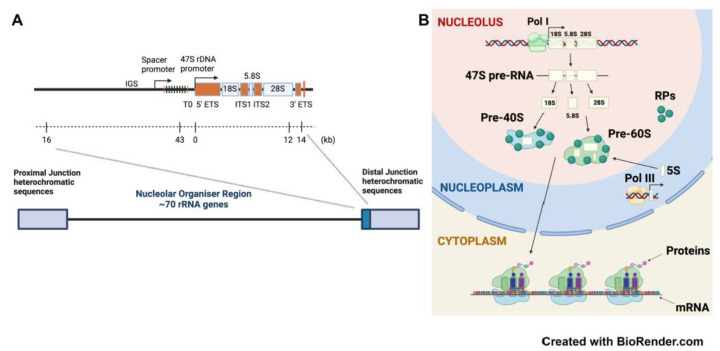Figure 1.
rDNA structure and ribosome biogenesis in mammalian cells. (A) Organization of ribosomal RNA (rRNA) genes in mammalian cells. Five NORs, each containing ~70 rRNA genes, are located on the short arms of the acrocentric chromosomes. A canonical rDNA unit consists of the 47S rRNA gene transcribed region made up of the 18S, 5.8S and 28S, coding regions flanked by ETS (external transcribed spacer) and ITS (internal transcribed spacer) elements, and the IGS. The IGS contains regulatory elements including spacer promoter and the 47S rDNA promoter. (B) Ribosome biogenesis is a tightly coordinated process involving all three RNA polymerases (Pol I, Pol II and Pol III). RNA Pol I transcribes the tandemly repeated ribosomal RNA (rRNA) genes to produce the 47S precursor rRNA (47S pre-rRNA) transcript in the nucleolus. Following transcription, the 47S pre-rRNA is subsequently cleaved and processed into the mature 18S, 5.8S, and 28S rRNA species. These molecules are then assembled with ribosomal proteins and the 5S rRNA produced by Pol II and III, respectively, to form the small (40S) and the large (60S) ribosomal subunits, which are exported from the nucleolus to the cytoplasm, where they form the mature (80S) ribosome required to initiate mRNA translation and thus protein synthesis.

